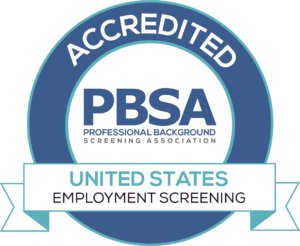As most of us know, the healthcare industry faces what many deem to be (or is soon to become) a hiring crisis.
According to the American Hospital Association (AHA), we are trending towards a 3.2 million healthcare workers shortage by 2026. Factors contributing to this shortage include:
- Rapid growth of the 65 and older age group
- Increase in chronic conditions (in young and old patients)
- Increased utilization of basic healthcare
- Upcoming wave of healthcare retirees
Each institution is also battling a turnover issue, particularly among first and second-year nurses and CNAs. At some point in the near future, filling vacant nursing spots and maintaining an adequate workforce may become tremendously difficult.
For more information on reducing turnover, read this article.
Variables Within Control
Of course, the amount of available talent seeking work is not a controllable variable for healthcare organizations. However, turnover may be.
While background screening can undoubtedly play a significant role in identifying a dependable candidate, many healthcare organizations will be hiring a high volume of new nurses, physicians, and other staff as they become available.
Because of this, organizations will have to implement comprehensive training programs and retention strategies to provide guidance, support, and incentives to their current workforce. As demand increases, lack of support, training, and regard for workload will be common reasons for departure.
Preserving Reputation and Avoiding Malpractice
Top talent wants to dedicate themselves to respectable institutions.
Strained organizations with heavy workloads, poor management of care, and malpractice concerns will offer little staying power to qualified staff. This is where employment screening can provide a lift.
Healthcare is an industry that demands careful due diligence when it comes to vetting and maintaining staff. Post-hire and ongoing screening have a place in this industry almost more than any other. Products such as ongoing criminal history tracking, social media screening (to reduce breaches in confidentiality), and drug screening (random and reasonable suspicion) can be of considerable value.
Legislative Efforts
The AHA is encouraging Congress to consider the future state of healthcare and prioritize industry needs in their upcoming legislative acts. The main arguments for prioritizing healthcare include the following:
- Employment in the healthcare field is down by over 80,000 jobs since 2020
- Medicare-funded residency caps are exasperating the shortage of physicians
- In 2017, over half of all nurses were age 50 or older
- The turnover rate of CNAs is nearing 28 percent
- According to some, healthcare staffing agency prices are high and lack regulation
- Healthcare burnout is on the rise as workload outweighs the pay for CNAs, nurses, and others
- Lack of programs to address workforce shortages
Takeaways
The need for building and maintaining a dependable workforce has never been greater for the healthcare industry. While new legislation may help to aid the issue in time, the onus to control each individual environment ultimately falls onto the organizations themselves. Deliberate and comprehensive talent acquisition, training, retention, and reputation management strategies are essential.
As an employment screening company with vast experience in the healthcare industry, we are always happy to discuss solutions and help you build and maintain a healthy, dependable workforce.








